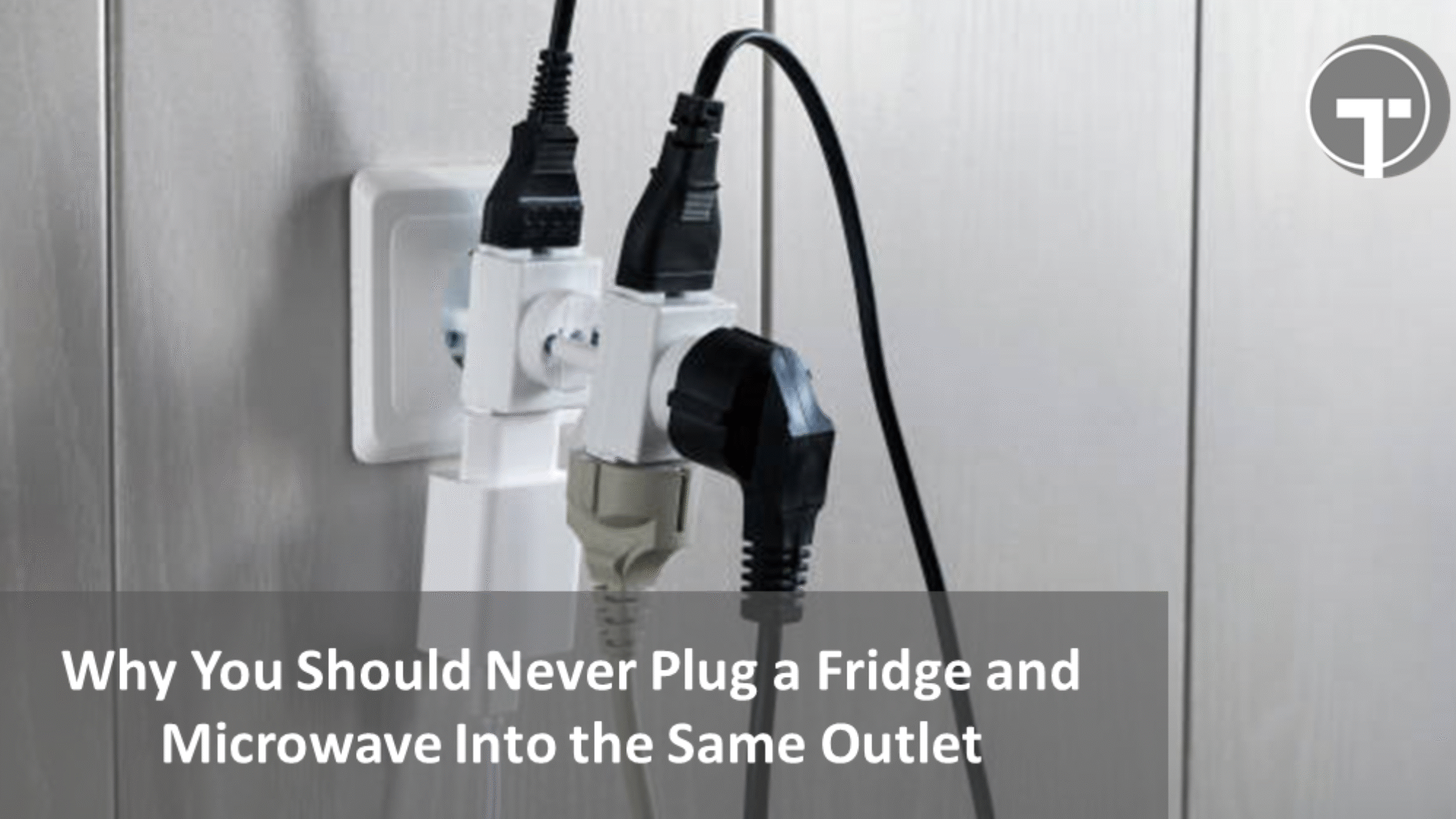You’re overloading the circuit and risking a fire.
But let’s not stop there. Let’s break it down the way TechieBano does: clear, conversational, and grounded in real electrical logic.
The Scene at Home
You’ve just moved into your new kitchen setup. One wall socket, two essential appliances. You think, “Let me just plug both my fridge and microwave into this extension board.”
Logical? Maybe.
Safe? Absolutely not.
Most people don’t realize this, but kitchens are high-demand zones when it comes to electricity. Two of the heaviest hitters? Your refrigerator and microwave oven.
Let’s Talk About Power Consumption
Here’s a quick snapshot of what these appliances draw:
| Appliance | Typical Wattage | Amp@230V |
|---|---|---|
| Fridge (mid-size) | 150–300 W | ~0.7–1.3 A |
| Microwave (solo) | 800–1200 W | ~3.5–5.2 A |
Now add them together and you’re pushing up to 6+ Amps on one socket, continuously.
But most Indian wall sockets are 6A rated—some newer homes may have 16A sockets, but not always.
This kind of pairing is just asking for trouble.
So What Can Go Wrong?
1. Tripping Circuit Breakers
Your MCB (Miniature Circuit Breaker) may trip as soon as both devices pull high current simultaneously. Especially if you’re heating in the microwave while the fridge compressor kicks in.
2. Socket Overheating
Plug points can overheat over time—especially cheap extension cords. That leads to melting, sparking, and eventually, short circuits.
3. Fire Hazard
Yes, it’s rare—but not unheard of. Many kitchen fires in India are caused by overloaded multi-plug points with high-consumption devices running together.
Real-Life Example
One of our readers from Pune messaged:
“I used a T-board to plug both the microwave and fridge. It worked fine for 2 months. Then one day, we smelled burnt plastic—and the plug board had melted from the inside.”
No damage was done that day—but it could’ve ended very differently.
So What Should You Do Instead?
1. Use Dedicated Circuits
Whenever possible, plug your fridge into its own wall socket—ideally a 16A point. Same goes for the microwave.
2. Avoid Extension Cords for Heavy Devices
Extension cords are fine for phone chargers or lamps—not for heavy electricals.
3. Label Kitchen Points (Smart Tip!)
Mark your sockets: “Fridge Only”, “Microwave Only”. Helps your family or guests avoid accidental overloads.
4. Ask Your Electrician
If your kitchen has just one point, consider getting another 16A wall socket installed. It’s a small cost, but a big safety upgrade.
Pro Tip: Watch for These Signs
If you’re ever doing this combo (even temporarily), watch for:
- Plug points that feel warm to the touch
- Burning smell
- Flickering lights when the microwave is used
- Fridge lights dimming when microwave turns on
These are early warnings. Don’t ignore them.
You don’t have to be an electrician to stay safe—you just need to know the basics.
And one of the golden rules?
Keep the fridge and microwave on separate power lines. They may both live in the kitchen, but they don’t belong on the same socket.

